IV hydration spas have become a popular wellness trend, promising quick fixes for everything from hangovers to fatigue through intravenous vitamin and mineral cocktails. These facilities offer direct-to-vein treatments that bypass traditional oral supplements, claiming faster absorption and better results.
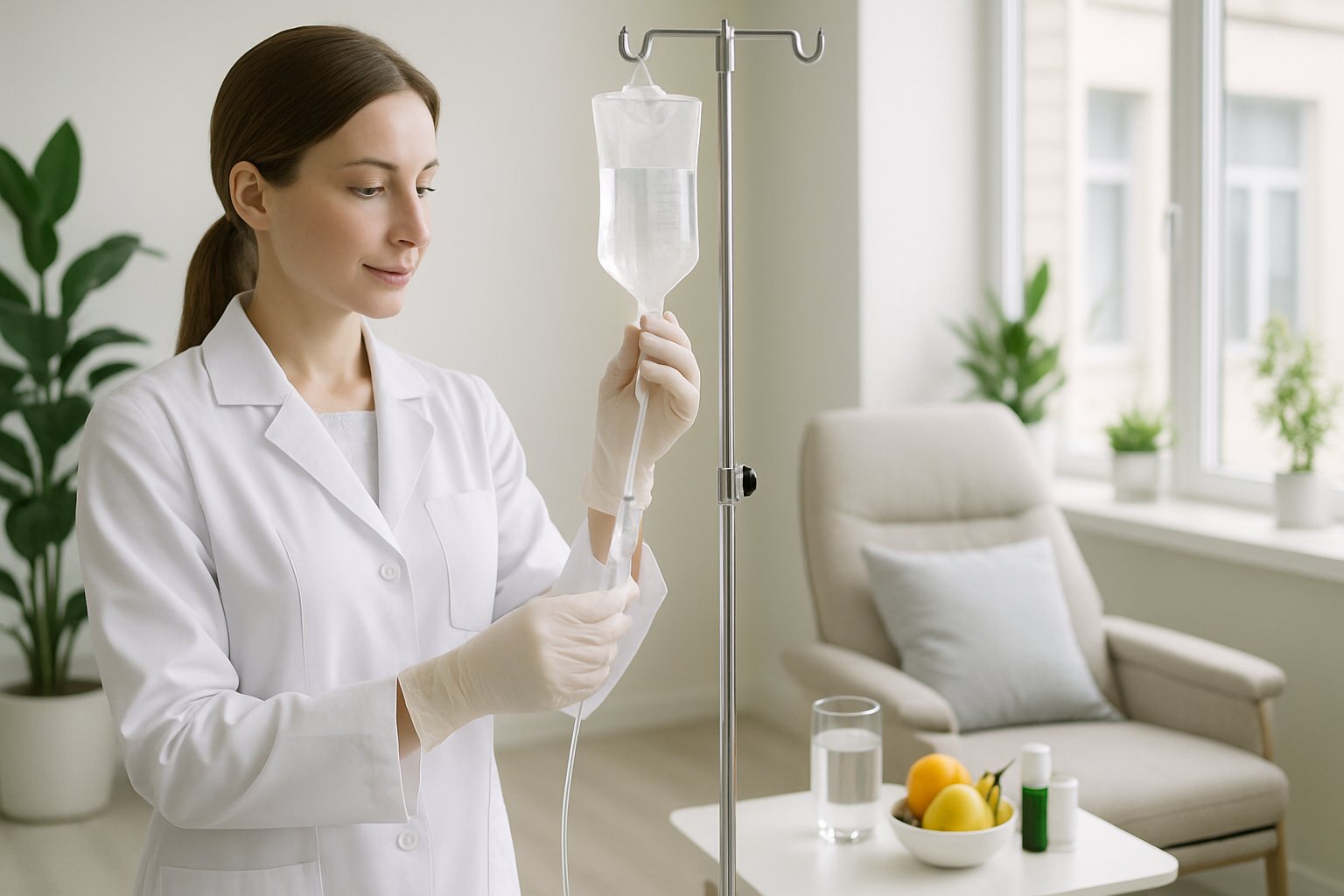
Most healthy people do not need IV hydration therapy, and experts warn about potential health risks[1] from these largely unregulated services. While IV therapy has legitimate medical uses in hospitals, the wellness spa version operates in a different context with different standards.
The growing industry lacks consistent regulation and medical oversight[2], raising important questions about safety, effectiveness, and whether these trendy treatments deliver on their promises. Understanding the facts behind IV hydration spas can help people make better decisions about their health and wellness spending.
Key Takeaways
- IV hydration spas administer fluids and vitamins directly into veins but lack strong scientific evidence for most wellness claims
- Potential risks include infections, allergic reactions, and electrolyte imbalances due to inconsistent regulation and oversight
- Most healthy individuals can meet their hydration and nutrient needs through oral intake without requiring IV therapy
What Are IV Hydration Spas?
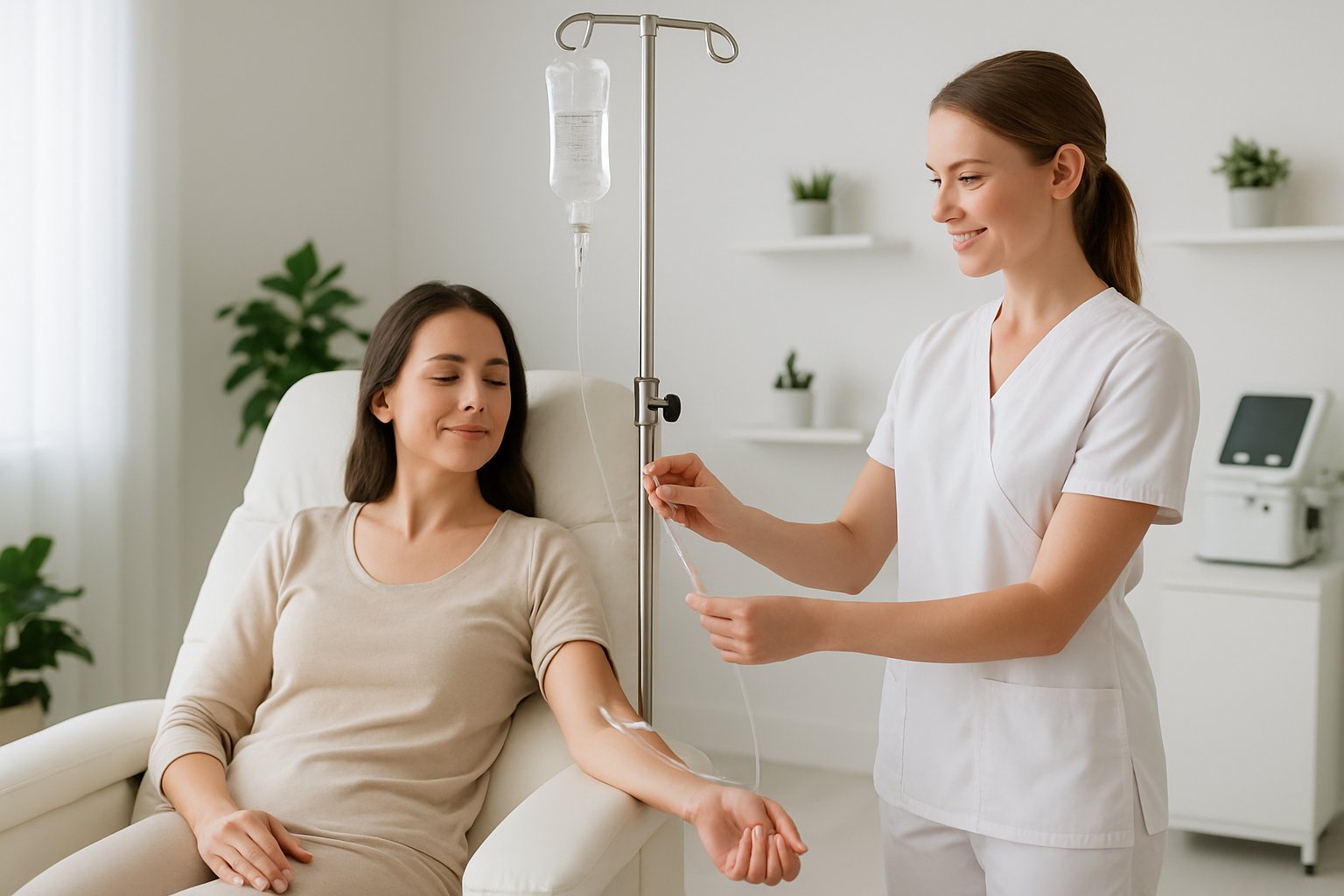
IV hydration spas are wellness facilities that deliver fluids, vitamins, and supplements directly into the bloodstream through intravenous therapy. These clinics operate outside traditional medical settings and target healthy individuals seeking wellness benefits rather than treating medical conditions.
How IV Hydration Spas Operate
IV hydration spas function as part of the broader wellness industry, offering elective treatments in spa-like environments. Clients typically book appointments online or walk in for sessions that last 30 to 60 minutes.
The treatment process begins with a consultation, though many IV hydration spas don’t require evaluation by a licensed medical professional[2] before recommending specific therapies. Staff members, who may include nurses or technicians, insert an IV catheter into the client’s arm or hand.
Most facilities offer comfortable seating areas where clients can relax during their infusion. Some spas provide amenities like Wi-Fi, snacks, or entertainment to enhance the experience.
IV hydration clinics must have someone who can write prescriptions[3], and that person must write a prescription for each client. However, oversight varies significantly between locations and states.
Key Services Offered
IV hydration spas market treatments for various conditions including hangovers, fatigue, dehydration, and general wellness enhancement. The most common offerings include:
Basic Hydration: Normal saline or dextrose solutions to restore fluid balance.
Vitamin Cocktails: Custom blends containing B vitamins, vitamin C, or other nutrients.
Popular Add-ins:
- Magnesium for muscle recovery (used by 57.3% of clinics)[4]
- Glutathione for immune support (used by 53.7% of clinics)[4]
- NAD (nicotinamide adenine dinucleotide) for anti-aging claims
Some locations also offer medications like anti-nausea drugs or pain relievers alongside their hydration treatments. Pricing typically ranges from $100 to $300 per session, with packages available for multiple visits.
IV Hydration Clinics vs. Traditional Medical Settings
IV hydration spas differ significantly from hospital or clinical IV therapy in several key ways. Traditional medical settings use IV therapy when patients cannot maintain hydration orally due to illness, surgery, or severe dehydration.
Medical Supervision: Hospitals require physician oversight and continuous monitoring during IV administration. IV hydration spas often operate with minimal medical supervision.
Patient Screening: Medical facilities conduct thorough health assessments before IV therapy. Many wellness spas skip comprehensive health evaluations.
Treatment Goals: Medical IV therapy treats specific diagnosed conditions. Spa treatments target general wellness claims that often lack scientific backing.
Safety Protocols: Hospitals follow strict sterility and monitoring procedures. Spa safety protocols vary widely between facilities[1].
Regulatory Oversight: Medical facilities face extensive regulation and inspection. IV hydration spa oversight varies widely across states[5], with inconsistent policies governing their operation.
How IV Hydration Therapy Works
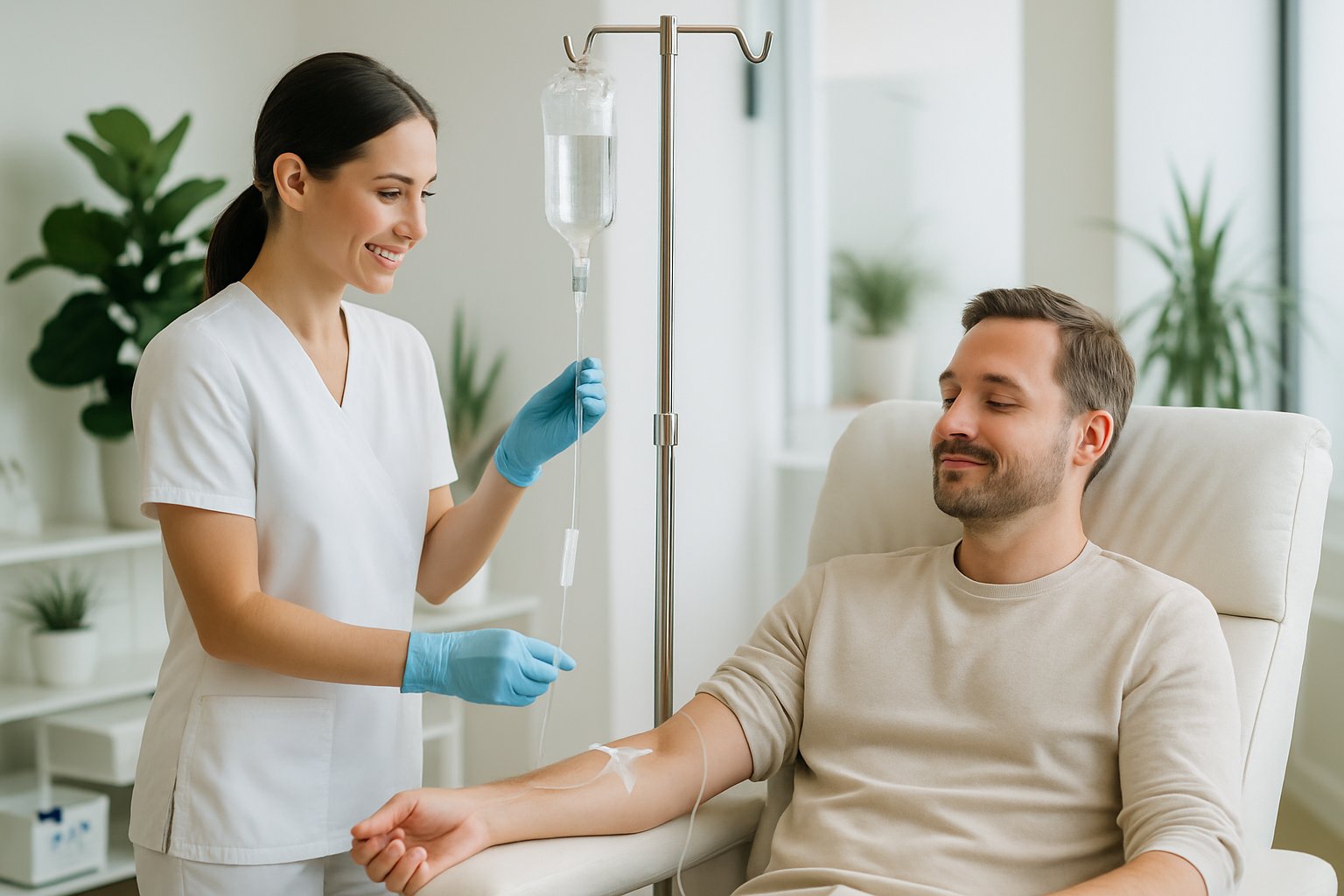
IV hydration therapy delivers fluids, vitamins, and electrolytes directly into the bloodstream through a small catheter inserted into a vein. This process bypasses the digestive system and allows for rapid absorption of nutrients and immediate rehydration.
Process of Administering IV Fluids
The IV hydration process takes 30 to 60 minutes[6] on average. A trained healthcare professional first cleans the injection site, typically on the arm or hand.
They insert a small catheter into a vein using a sterile needle. The needle is removed once the catheter is properly positioned, leaving only the flexible tube in place.
The IV bag connects to the catheter through sterile tubing. Gravity or an infusion pump controls the flow rate of fluids into the bloodstream.
Common steps include:
- Patient consultation and health assessment
- Site preparation and sterilization
- Catheter insertion
- IV solution administration
- Monitoring throughout treatment
- Catheter removal and site care
Most patients experience minimal discomfort during insertion. The treatment area is monitored for signs of swelling, redness, or other complications.
Common Ingredients in IV Hydration
IV hydration solutions contain various ingredients tailored to specific wellness goals. The base solution is typically normal saline, which matches the body’s natural salt concentration.
Electrolytes restore mineral balance and include:
- Sodium for fluid regulation
- Potassium for muscle and nerve function
- Chloride for pH balance
- Magnesium for enzyme function
Vitamins commonly added to hydration therapy include:
- Vitamin C for immune support and antioxidant protection
- B-complex vitamins for energy metabolism
- Vitamin B12 for nerve function and red blood cell production
Some formulations include glutathione, a powerful antioxidant that supports liver detoxification and cellular health. Other additions may include zinc, calcium, or specialized nutrients based on individual needs.
Rehydration and Bioavailability
IV hydration therapy achieves rapid rehydration by bypassing the digestive system[6] entirely. This direct delivery method ensures 100% bioavailability of fluids and nutrients.
When someone drinks fluids, the digestive system must process them first. This can take 30 minutes to several hours for complete absorption. IV therapy delivers hydration directly to blood cells within minutes.
The bloodstream immediately distributes the fluids throughout the body. This allows cells to access water and nutrients faster than oral rehydration methods.
Bioavailability advantages include:
- No digestive interference or malabsorption issues
- Immediate cellular access to nutrients
- Higher concentration delivery than oral supplements
- Faster symptom relief from dehydration
The body can utilize vitamins and electrolytes immediately without waiting for digestion. This makes IV hydration therapy particularly effective for severe dehydration or when rapid nutrient replenishment is needed.
Potential Health Benefits
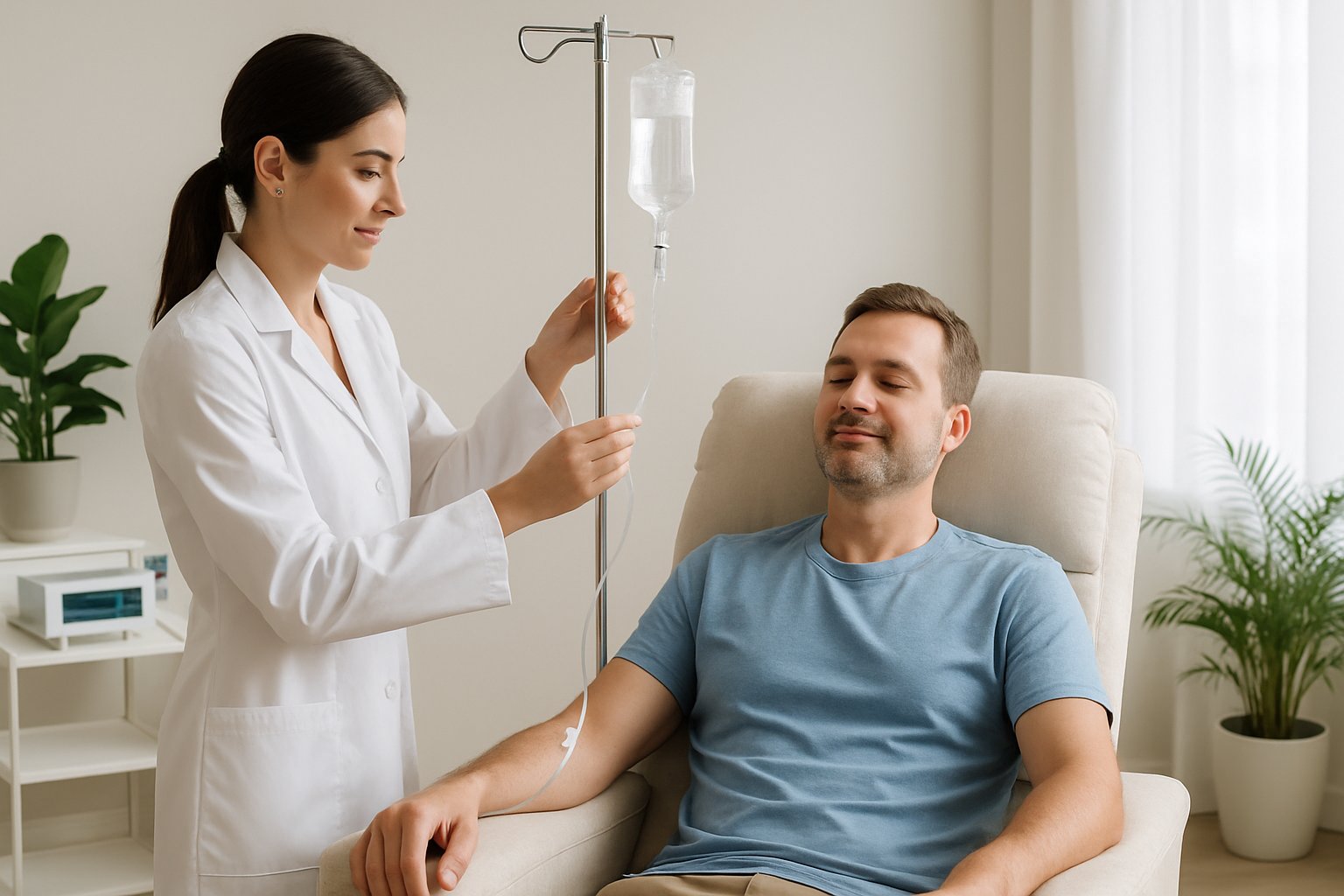
IV hydration spas promote several wellness benefits through direct vitamin and fluid delivery. These treatments claim to boost energy, support immune function, and accelerate recovery from dehydration.
Enhanced Hydration and Recovery
IV hydration therapy delivers fluids directly into the bloodstream. This bypasses the digestive system entirely. The body can absorb large amounts of fluid quickly through this method.
Athletes often seek these treatments after intense workouts. The direct delivery helps replace lost electrolytes and fluids faster than drinking water alone.
Common IV fluids include:
- Normal saline solution
- Electrolyte mixtures
- B-complex vitamins
- Vitamin C
Rehydration through IV therapy can help people recover from hangovers. It may also benefit those with severe dehydration from illness or heat exposure.
The treatment typically takes 30 to 60 minutes. Patients often report feeling more alert and energized afterward.
Immune System Support
Many IV treatments include high doses of vitamin C. Proponents claim this boosts the body’s natural defenses. Some formulations also contain zinc and other immune-supporting nutrients.
Glutathione is another popular addition to IV cocktails. This antioxidant may help protect cells from damage. However, the body naturally produces glutathione on its own.
Popular immune-boosting ingredients:
- Vitamin C (1,000-25,000 mg)
- Zinc sulfate
- Glutathione
- B vitamins
The high doses delivered through IV exceed what the body can absorb orally. Supporters believe this creates therapeutic levels in the blood.
Most healthy people get enough vitamins from food and supplements. IV treatments may benefit those with specific deficiencies or absorption problems.
Energy and Wellness Claims
IV spas market treatments for fatigue and low energy. These cocktails often contain B vitamins that support cellular energy production. Vitamin B12 is especially popular for energy-boosting formulations.
Some treatments claim to improve mental clarity and focus. Others promise better sleep quality or stress relief. These wellness benefits vary greatly between individuals.
Common energy-focused vitamins:
- B12 (methylcobalamin)
- B-complex vitamins
- Magnesium
- Amino acids
The placebo effect may play a role in perceived benefits. People often feel better simply because they expect to improve.
Dehydration itself causes fatigue and brain fog. Quick rehydration through IV therapy can rapidly improve these symptoms in dehydrated individuals.
Most energy and wellness claims lack strong scientific evidence. Healthy people typically don’t need IV vitamins to maintain normal energy levels.
Risks and Side Effects

IV hydration spa treatments carry several health risks that patients should understand before receiving treatment. Infection, bleeding, and allergic reactions[2] represent the most common complications from these procedures.
Infection and Contamination Risks
Infection at the IV insertion site ranks among the most frequent complications at hydration spas. Poor sterile technique can introduce bacteria directly into the bloodstream, which is called ‘bacteremia’, and can be life-threatening.
One documented case involved septic shock[2] after an IV infusion at a clinic. This serious infection required emergency medical treatment.
Common infection risks include:
- Bacterial contamination from non-sterile needles
- Improper cleaning of injection sites
- Reused or contaminated equipment
- Inadequately trained staff performing procedures
Bleeding and bruising also occur when staff lack proper training. Veins can become inflamed or damaged during insertion attempts.
Many spas operate without adequate medical oversight. This increases the chance of contaminated solutions or improper handling of IV equipment.
Allergic Reactions and Adverse Effects
The composition of IV cocktails varies widely between facilities. Patients may not know exactly what ingredients they receive.
Since ingredients may not match what is advertised[2], unexpected allergic reactions can occur. Some spas use compounded formulations that lack FDA oversight.
Potential adverse reactions include:
- Skin rashes or hives
- Difficulty breathing
- Swelling at injection sites
- Nausea and vomiting
Interactions with existing medications pose additional risks. Many spa staff cannot properly screen for drug interactions before treatment.
Most IV therapy side effects are well-known to experienced providers[7]. However, wellness spas may lack the medical expertise to handle complications.
Electrolyte Imbalances
Excessive doses of vitamins, minerals, or electrolytes can harm the body. This risk increases for people with underlying health conditions.
Patients with kidney, heart, or metabolic disease[2] face higher risks from electrolyte changes. Their bodies cannot process large amounts of certain substances.
High-risk electrolyte complications:
- Sodium overload – Can raise blood pressure dangerously
- Potassium excess – May cause heart rhythm problems
- Magnesium toxicity – Can slow breathing and heart rate
- Vitamin overdoses – Fat-soluble vitamins build up in tissues
Most healthy people maintain proper electrolyte balance through normal food and drink. IV treatments can disrupt this natural balance unnecessarily.
Spa staff often lack the medical training to adjust doses based on individual health needs. They may give standard formulations regardless of patient conditions.
Safety and Regulation Concerns
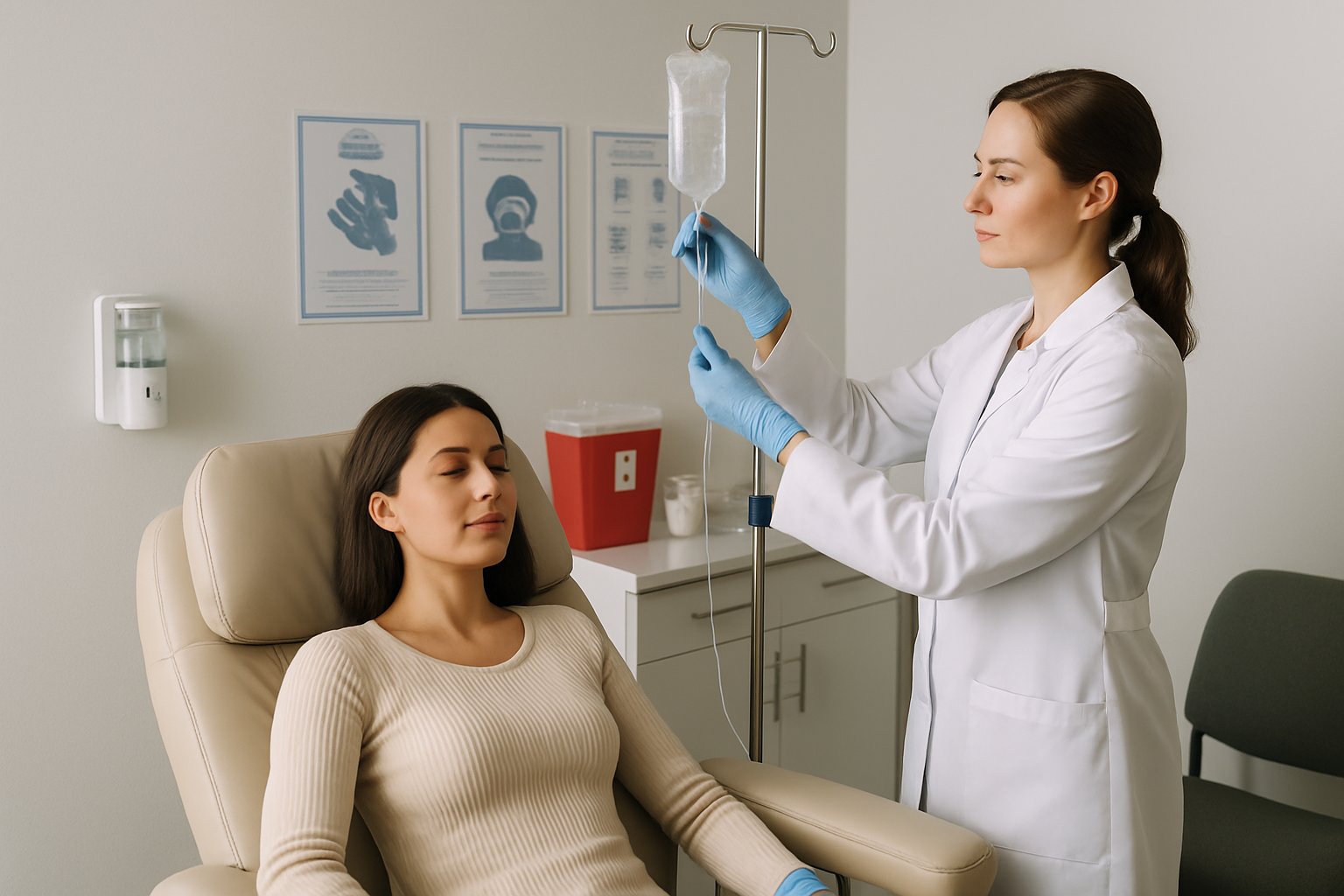
The IV hydration spa industry lacks consistent oversight[8] across the United States, with only four states addressing key safety areas. Many facilities fail to provide proper risk disclosure or require consultations with licensed health professionals.
Industry Oversight and Legal Landscape
The wellness industry operates with minimal federal regulation for IV hydration services. A 2025 study in JAMA Internal Medicine[2] found that only 32 states had issued policies about IV clinics as of June 2024.
Current Regulatory Status:
- Only 4 states (Alabama, North Carolina, South Carolina, Vermont) address all key safety areas
- IV hydration spas account for 10% of the $15 billion medical spa industry[5]
- Most states lack specific requirements for facility registration
Texas passed Jenifer’s Law in 2025, requiring licensed nurses to administer IV treatments under physician supervision. This represents one of the most comprehensive regulatory approaches.
The Food and Drug Administration has flagged safety concerns. However, the booming industry continues with little federal or state-level regulation[4].
Training and Credentials of Providers
Staff qualifications vary significantly between IV hydration spa locations. Many facilities employ individuals without proper medical training to insert IVs and monitor patients.
Key Credential Issues:
- No standardized training requirements across states
- Some locations use unlicensed staff for medical procedures
- Limited oversight of who can prescribe IV formulations
Licensed registered nurses typically have the most appropriate training for IV insertion. They understand proper sterile technique and can recognize complications like infiltration or allergic reactions.
Physician assistants and nurse practitioners can supervise treatments and handle medical conditions that may arise. Their presence ensures someone with advanced medical knowledge oversees the process.
Some facilities operate with minimal medical supervision. This creates risks when patients experience adverse reactions or have underlying medical conditions.
Patient Screening and Precautions
Most IV hydration clinic locations provide inadequate patient screening before treatments. The study found only 27% of facilities required consultations with licensed health professionals.
Safety Screening Gaps:
- Limited assessment of medical conditions
- Inadequate allergy history collection
- Poor disclosure of treatment risks
- Minimal monitoring during infusions
Proper screening should identify patients with heart conditions, kidney disease, or medication interactions. These medical conditions can make IV hydration dangerous or require dosage adjustments.
Risk disclosure remains problematic across the industry. Only 25% of facilities adequately explained potential complications during researcher calls.
Patients need information about infection risks, electrolyte imbalances, and allergic reactions. Without proper warnings, they cannot make informed decisions about treatments.
Making Informed Choices

Choosing the right IV hydration spa requires careful evaluation of medical oversight and professional credentials. Patients should prioritize facilities with proper licensing, qualified staff, and transparent safety practices.
Consulting Healthcare Professionals
People with medical conditions should talk to their doctor before getting IV hydration therapy. A healthcare provider can determine if IV fluids are safe and necessary based on individual health needs.
Doctors can identify potential risks or drug interactions. They know which medical conditions might make IV therapy dangerous. Some people take medications that could react badly with IV fluids or vitamins.
Healthcare professionals can also suggest safer alternatives. Many people can get proper hydration by drinking water and eating balanced meals. This is often cheaper and carries no medical risks.
Key questions to ask your doctor:
- Is IV hydration safe for my health conditions?
- Will my medications interact with IV fluids?
- Do I actually need IV therapy?
- What are safer alternatives?
Evaluating Credibility of IV Hydration Spas
Only 27% of IV hydration clinics require consultation with licensed health professionals[8] before treatment. This lack of medical oversight creates safety risks.
Look for spas with registered nurses or licensed medical professionals on staff. The facility should require a medical consultation before any treatment. Staff should explain all risks and side effects clearly.
Red flags to avoid:
- No licensed medical staff present
- Staff cannot answer basic medical questions
- Facility refuses to discuss risks or side effects
- No requirement for medical history review
Check if the IV hydration clinic follows state regulations. Only four states address all key safety areas[8] for IV therapy oversight.
Ask about the source and quality of IV fluids used. Reputable facilities use FDA-approved products from licensed pharmacies. They should provide clear information about what goes into each IV bag.
Frequently Asked Questions

IV hydration therapy involves specific costs, safety protocols, and potential side effects that patients should understand. Treatment frequency and pre-therapy precautions vary based on individual health needs and medical conditions.
What are the benefits and potential risks associated with IV vitamin therapy?
IV hydration therapy provides rapid hydration[6] by delivering fluids directly into the bloodstream. This bypasses the digestive system and allows for faster absorption than drinking fluids.
The therapy can restore electrolyte balance and replenish vitamins quickly. Athletes often use it to recover from intense workouts or competitions.
Potential risks include infection at the injection site if proper sterile procedures are not followed. Patients may experience mild discomfort, redness, or swelling where the IV is inserted.
Some people report a metallic taste or warm sensation during treatment. Serious reactions like allergic responses or breathing problems are rare but possible.
Experts warn about infection risks and lack of medical oversight[2] at some IV hydration spas. Qualified healthcare providers should always administer these treatments.
How much does typical IV hydration therapy cost?
IV hydration therapy costs vary widely depending on location and type of treatment. Basic hydration sessions typically range from $100 to $250 per treatment.
Vitamin-enhanced therapies often cost more than basic saline solutions. Specialized treatments for athletic recovery or beauty purposes may reach $300 to $500.
Mobile IV services that come to homes or offices usually charge premium prices. Insurance rarely covers these wellness treatments since they are considered elective.
Spa locations in upscale areas tend to charge higher rates. Patients should compare prices and services before choosing a provider.
Are there any guidelines for the safe administration of IV vitamin therapy?
Licensed healthcare professionals should always administer IV therapy treatments. Registered nurses or doctors have the proper training to insert IVs safely.
Sterile equipment and proper sanitation procedures are essential for preventing infections. Treatment facilities should follow strict medical protocols and safety standards.
Providers should review patient medical histories before treatment. They need to check for allergies and existing health conditions that might cause complications.
Equipment should be single-use and properly disposed of after each session. Treatment rooms should meet medical facility cleanliness standards.
What side effects can occur from IV vitamin therapy?
Common side effects include bruising or soreness at the IV insertion site. These symptoms typically resolve within a few days of treatment.
Some patients experience a metallic taste in their mouth during the infusion. Others may feel warmth or flushing sensations as the fluids enter their bloodstream.
Nausea or dizziness can occur if the IV flows too quickly. Healthcare providers can adjust the drip rate to reduce these symptoms.
Serious side effects like severe allergic reactions are uncommon but require immediate medical attention. Symptoms include difficulty breathing, chest tightness, or widespread rash.
People with heart or kidney problems face higher risks of complications. They should consult their doctors before receiving IV therapy.
How frequently is IV therapy recommended for optimal health benefits?
Most healthy adults can safely receive IV hydration therapy once or twice per month. Frequent treatments are generally unnecessary for people with normal hydration levels.
Athletes may benefit from more frequent sessions during intense training periods. They might receive treatments weekly during competition seasons.
People recovering from illness or severe dehydration may need multiple sessions initially. The frequency should decrease as their condition improves.
Healthcare providers should determine appropriate treatment schedules based on individual needs. Self-medicating with frequent IV treatments is not recommended.
What precautions should be taken before undergoing IV therapy?
Patients should disclose their complete medical history to healthcare providers. This includes current medications, allergies, and existing health conditions.
People with heart disease, kidney problems, or high blood pressure need medical clearance first. These conditions can increase the risk of complications from IV fluids.
Pregnant women should avoid IV vitamin therapy unless medically necessary. The effects of high-dose vitamins on developing babies are not fully understood.
Patients should eat a light meal before treatment to prevent nausea or dizziness. Staying hydrated with oral fluids before the session is also helpful.
Anyone taking blood-thinning medications should inform their provider. These drugs can increase bruising and bleeding at the injection site.
References
- Experts Warn: The IV Hydration Craze May Be Putting You at Risk. https://www.healthday.com/health-news/general-health/experts-warn-the-iv-hydration-craze-may-be-putting-you-at-risk Accessed October 21, 2025
- Experts Caution Over IV Hydration Spa Trend and Health Risks. https://www.medboundtimes.com/fitness-and-wellness/iv-hydration-spas-risks-regulation Accessed October 21, 2025
- What ‘Secret Shoppers’ Discovered About IV Hydration Spas. https://www.medscape.com/viewarticle/what-secret-shoppers-discovered-about-iv-hydration-spas-2025a1000qui Accessed October 21, 2025
- Booming IV hydration spa industry needs more oversight, researchers say. https://www.cspi.org/press-release/booming-iv-hydration-spa-industry-needs-more-oversight-researchers-say Accessed October 21, 2025
- 'It's in This Gray Zone': Study Calls for Tighter Oversight of IV Hydration Spas. https://www.medpagetoday.com/publichealthpolicy/healthpolicy/117824 Accessed October 21, 2025
- IV Hydration Therapy: What You Need To Know. https://driphydration.com/blog/iv-hydration-therapy-what-to-know/ Accessed October 21, 2025
- IV Therapy Safety: What Patients…. https://americanmedspa.org/blog/iv-therapy-safety-what-patients-should-know Accessed October 21, 2025
- JAMA Study Finds Inconsistent IV…. https://americanmedspa.org/news/jama-study-finds-inconsistent-iv-hydration-spa-oversight Accessed October 21, 2025
